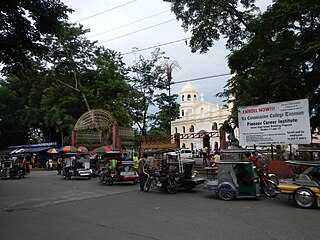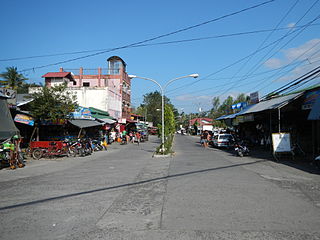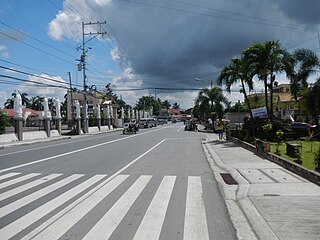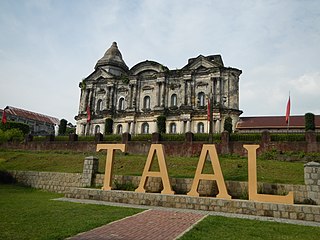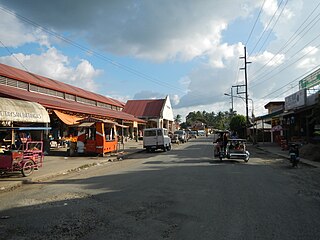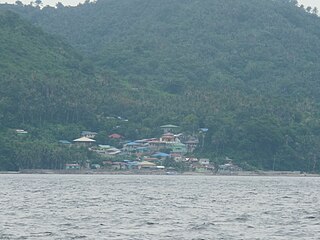San Nicolas | |
|---|---|
| Municipality of San Nicolas | |
 San Nicolas welcome arch | |
 Map of Batangas with San Nicolas highlighted | |
Location within the Philippines | |
| Coordinates: 13°55′42″N120°57′04″E / 13.92825°N 120.951°E | |
| Country | Philippines |
| Region | Calabarzon |
| Province | Batangas |
| District | 3rd district |
| Founded | June 1, 1955 |
| Named for | St. Nicholas of Tolentino |
| Barangays | 18 (see Barangays) |
| Government | |
| • Type | Sangguniang Bayan |
| • Mayor | Lester D. de Sagun |
| • Vice Mayor | Napoleon V. Arceo |
| • Representative | Ma. Theresa V. Collantes |
| • Municipal Council | Members |
| • Electorate | 16,841 voters (2022) |
| Area | |
| • Total | 14.37 km2 (5.55 sq mi) |
| Elevation | 47 m (154 ft) |
| Highest elevation | 286 m (938 ft) |
| Lowest elevation | 5 m (16 ft) |
| Population (2020 census) [3] | |
| • Total | 23,908 |
| • Density | 1,700/km2 (4,300/sq mi) |
| • Households | 5,209 |
| Economy | |
| • Income class | 5th municipal income class |
| • Poverty incidence | 19.62 |
| • Revenue | ₱ 118.6 million (2020) |
| • Assets | ₱ 230 million (2020) |
| • Expenditure | ₱ 84.84 million (2020) |
| • Liabilities | ₱ 38.74 million (2020) |
| Service provider | |
| • Electricity | Batangas 1 Electric Cooperative (BATELEC 1) |
| Time zone | UTC+8 (PST) |
| ZIP code | 4207 |
| PSGC | |
| IDD : area code | +63 (0)43 |
| Native languages | Tagalog |
San Nicolas, officially the Municipality of San Nicolas (Tagalog : Bayan ng San Nicolas), is a 5th class municipality in the province of Batangas, Philippines. According to the 2020 census, it has a population of 23,908 people. It is equivalent to 0.15% of the population in the Calabarzon area or 0.82% of the total population of Batangas province. These numbers are used to calculate the population density, which is 1,057 inhabitants per square kilometer or 2,740 inhabitants per square mile. The municipality makes up 0.73% of Batangas's total area, with a land area of 22.61 square kilometers or 8.73 square miles. [3]
Contents
- Etymology
- History
- Geography
- Barangays
- Climate
- Demographics
- Economy
- Politics
- Sister city
- References
- External links
The municipality also occupies the southern half of Taal Volcano, shared by the municipality of Talisay in the northern half.










